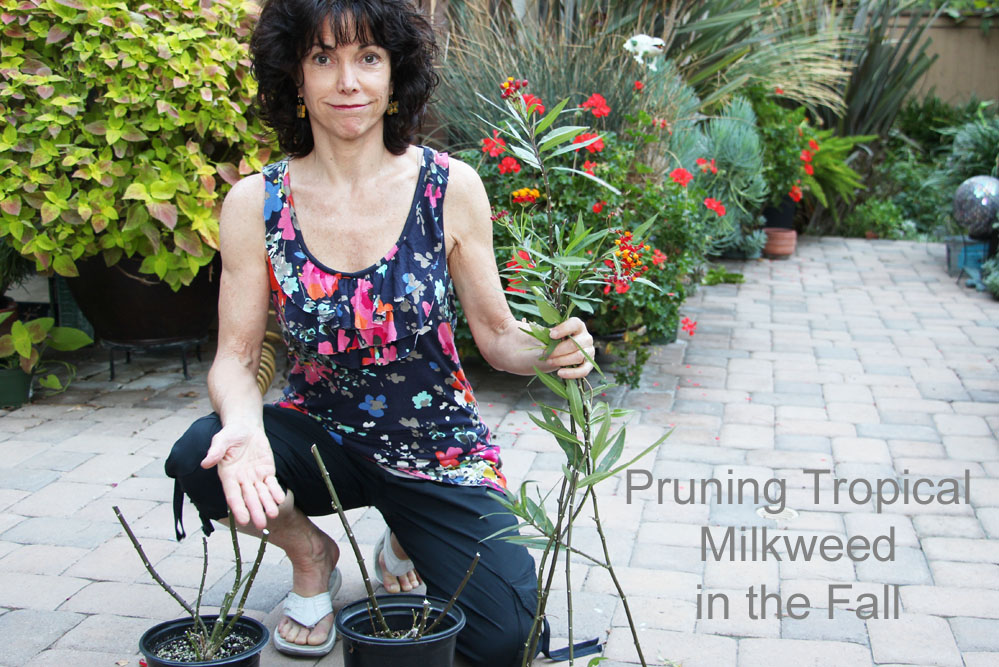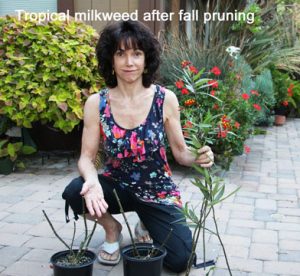
01 Aug Pruning Tropical Milkweed in the Fall – Imperative for Monarch Butterfly Health
Tropical Milkweed has been on the market quite a few years and, as a result, is prolific in Orange County. It doesn’t die back in the fall like native milkweed, but continues to get leaves year round.
This creates a serious health issue for monarch butterfly development and for the well-being of the population as a whole.
There is a microscopic parasite called O.e. that is naturally found on milkweed. Caterpillars ingest it by eating leaves with O.e. and then emerge as butterflies with O.e. on their abdomens. Infected monarchs then spread the O.e. to milkweed wherever they drink nectar or lay eggs. One season of O.e. on a milkweed plant is generally not a problem. O.e. on native milkweed dies off in the fall thereby killing the O.e. on the plant. Tropical milkweed, however, will continue to accumulate O.e. as it does NOT die back in fall. It continues to have leaves through the winter in coastal tropical climes such as southern California, Gulf Coast, and southern/southeastern states. If tropical milkweed is not pruned to kill off the O.e. every fall, within 2 to 3 years the O.e. will accumulate to levels that can cause monarchs to be born disabled/unable to fly, die as caterpillars or die in the chrysalis. The butterflies that emerge with deformities including lack of wing sections are note able to fly and starve to death within a couple days. In addition, monarchs that do emerge fine but have excessive O.e. levels will fly and carry the parasite to plants milkweed in other gardens, thereby spreading the parasite.
The second concern if for the monarch population as a whole. If monarchs emerge in early November and smell milkweed leaves, they will sexually mature and stay here rather than migrate to central coast California. This weakens the overall population as less able monarchs die off during the migration.
Therefore, it is CRITICAL to PRUNE TOPICAL MILKWEED by Halloween in southern California, perhaps earlier in other tropical areas of the US. Prune the stems down to 6 – 10″ tall and strip off all the leaves, mimicking die back and removing all the O.e. for the season. THANK YOU for helping support a healthy monarch butterfly population.







